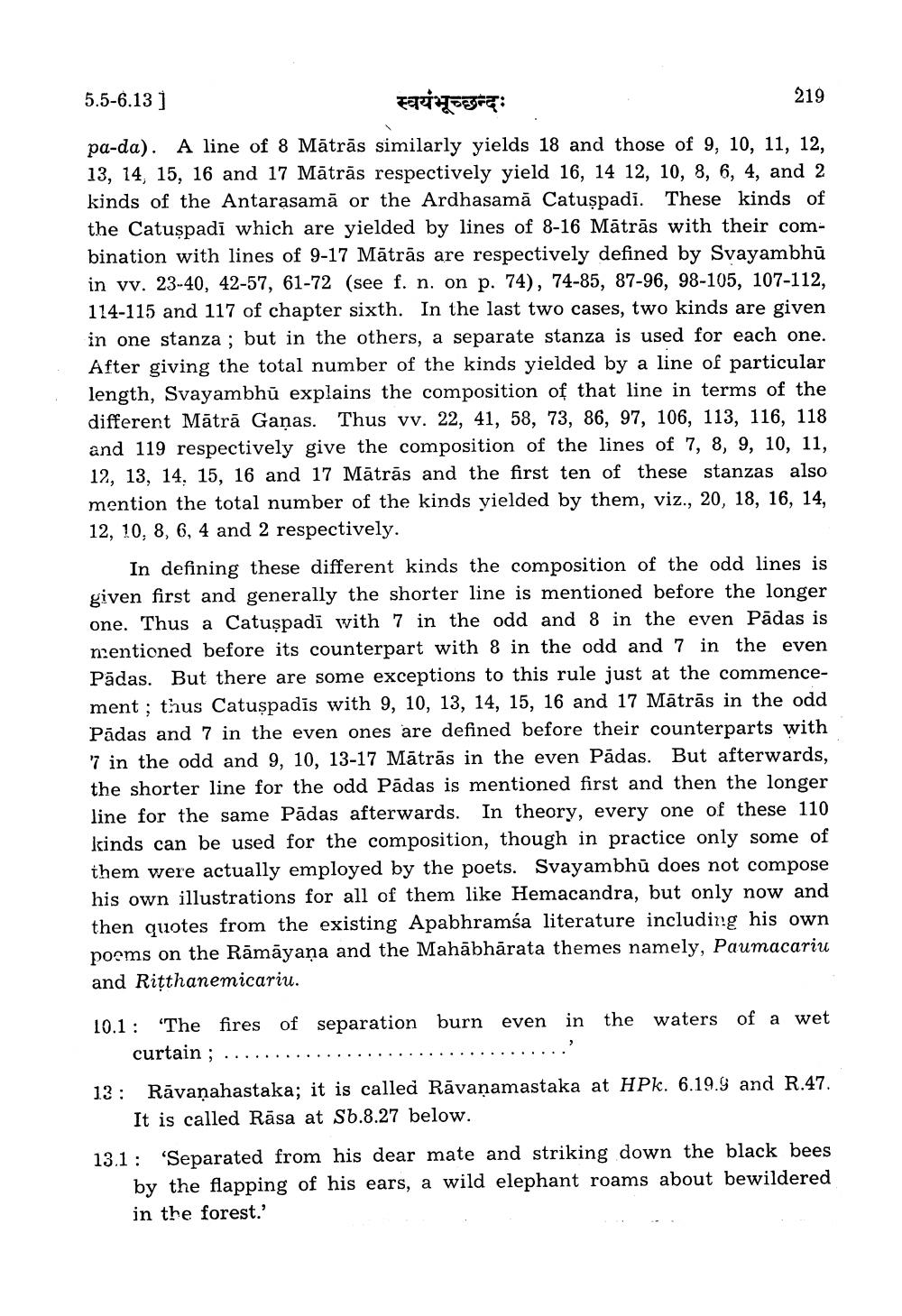________________
5.5-6.13) स्वयंभूच्छन्दः
219 pa-da). A line of 8 Mātrās similarly yields 18 and those of 9, 10, 11, 12, 13, 14, 15, 16 and 17 Mātrās respectively yield 16, 14 12, 10, 8, 6, 4, and 2 kinds of the Antarasamā or the Ardhasamă Catușpadi. These kinds of the Catuspadi which are yielded by lines of 8-16 Mātrās with their combination with lines of 9-17 Mātrās are respectively defined by Svayambhū in vv. 23-40, 42-57, 61-72 (see f. n. on p. 74), 74-85, 87-96, 98-105, 107-112, 114-115 and 117 of chapter sixth. In the last two cases, two kinds are given in one stanza ; but in the others, a separate stanza is used for each one After giving the total number of the kinds yielded by a line of particular length, Svayambhū explains the composition of that line in terms of the different Mātrā Gaņas. Thus vv. 22, 41, 58, 73, 86, 97, 106, 113, 116, 118 and 119 respectively give the composition of the lines of 7, 8, 9, 10, 11,
12, 13, 14, 15, 16 and 17 Mātrās and the first ten of these stanzas also mention the total number of the kinds yielded by them, viz., 20, 18, 16, 14, 12, 10, 8, 6, 4 and 2 respectively.
In defining these different kinds the composition of the odd lines is given first and generally the shorter line is mentioned before the longer one. Thus a Catuspadi with 7 in the odd and 8 in the even Pādas is nuentioned before its counterpart with 8 in the odd and 7 in the even Pādas. But there are some exceptions to this rule just at the commencement; thus Catuspadis with 9, 10, 13, 14, 15, 16 and 17 Mātrās in the odd Pādas and 7 in the even ones are defined before their counterparts with 7 in the odd and 9, 10, 13-17 Mātrās in the even Pädas. But afterwards, the shorter line for the odd Pādas is mentioned first and then the longer line for the same Pādas afterwards. In theory, every one of these 110 kinds can be used for the composition, though in practice only some of them were actually employed by the poets. Svayambhū does not compose his own illustrations for all of them like Hemacandra, but only now and then quotes from the existing Apabhramśa literature including his own poems on the Rāmāyana and the Mahābhārata themes namely, Paumacariu and Ritthanemicariu.
10.1: 'The fires of separation burn even in the waters of a wet
curtain ; ............ 13: Rāvaņahastaka; it is called Rāvanamastaka at HPk. 6.19.9 and R.47.
It is called Rāsa at Sb.8.27 below.
13.1: 'Separated from his dear mate and striking down the black bees
by the flapping of his ears, a wild elephant roams about bewildered in the forest.'




